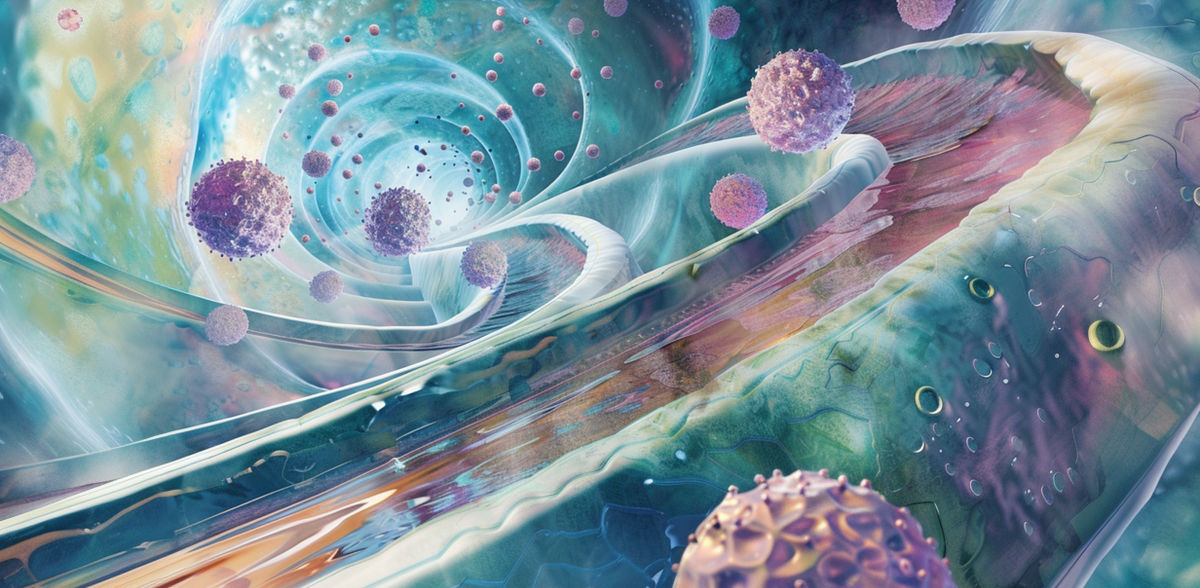How cells are ahead of the curve
Such universal principles allow a better understanding of the migration of immune and cancer cells, paving the way for new treatment options
The curvature of a surface determines the migration behavior of biological cells. They preferentially move along valleys or grooves while avoiding ridges. These findings with contribution from the Max Planck Institute for Dynamics and Self-Organization (MPI-DS) and the Weizmann Institute of Science gave rise to a model predicting cellular behavior. Such universal principles now allow a better understanding of the migration of immune and cancer cells, paving the way for new treatment options.
Cell migration within the body is a fundamental biological phenomenon. Immune cells constantly scout for pathogens and cancer cells migrate through the body causing metastasis. Inside the body, many surfaces such as tissues, blood vessels, or protrusions have a curved shape. “We were able to demonstrate that these curvatures directly affect the movement pattern of cells,” explains Eberhard Bodenschatz, director at the MPI-DS. The scientists could show experimentally that cells prefer certain curvatures over others, a phenomenon called “curvotaxis”.
To unravel this mechanism, they created a computer model of a vesicle containing active cytoskeletal components used for movement. This structure resembles a biological cell, migrating in the body. “Using this minimal cell model, we systematically explored the curvotaxis mechanism on various curved surfaces,” reports Nir Gov from the Weizmann Institute of Science, Israel. “The model cell shows specific migration patterns, for example where cells move along grooves of a wave-like shape, while avoiding motion along the ridges,” he continues.
This observation gave rise to a new model predicting cell behavior. The predictions of the model were then verified experimentally using several cell types. The scientists thus revealed a universal mechanism for cell motility that applies to many different types of migrating cells. On a convex or tubular structure such as the outside surface of a blood vessel, cells tend to move circumferentially around the shape. In contrast, axial forward or backward movement is preferred on concave structures (such as inside a blood vessel). “Our work highlights how physical principles shape universal behavior, even within the complex world of biology,” concludes Eberhard Bodenschatz.
Original publication
Raj Kumar Sadhu, Marine Luciano, Wang Xi, Cristina Martinez-Torres, Marcel Schröder, Christoph Blum, Marco Tarantola, Stefano Villa, Samo Penič, Aleš Iglič, Carsten Beta, Oliver Steinbock, Eberhard Bodenschatz, Benoît Ladoux, Sylvain Gabriele, Nir S. Gov; "A minimal physical model for curvotaxis driven by curved protein complexes at the cell’s leading edge"; Proceedings of the National Academy of Sciences, Volume 121, 2024-3-15
Original publication
Raj Kumar Sadhu, Marine Luciano, Wang Xi, Cristina Martinez-Torres, Marcel Schröder, Christoph Blum, Marco Tarantola, Stefano Villa, Samo Penič, Aleš Iglič, Carsten Beta, Oliver Steinbock, Eberhard Bodenschatz, Benoît Ladoux, Sylvain Gabriele, Nir S. Gov; "A minimal physical model for curvotaxis driven by curved protein complexes at the cell’s leading edge"; Proceedings of the National Academy of Sciences, Volume 121, 2024-3-15
Topics
Organizations
Other news from the department science

Get the life science industry in your inbox
By submitting this form you agree that LUMITOS AG will send you the newsletter(s) selected above by email. Your data will not be passed on to third parties. Your data will be stored and processed in accordance with our data protection regulations. LUMITOS may contact you by email for the purpose of advertising or market and opinion surveys. You can revoke your consent at any time without giving reasons to LUMITOS AG, Ernst-Augustin-Str. 2, 12489 Berlin, Germany or by e-mail at revoke@lumitos.com with effect for the future. In addition, each email contains a link to unsubscribe from the corresponding newsletter.



















































